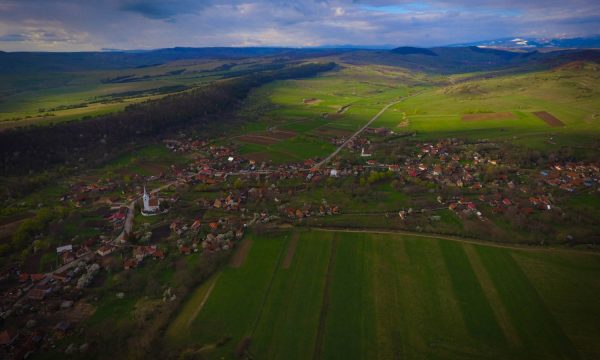Craciunel lies in the valley of Homorod Mic (Hu: Kis-Homoród), between Merești (Hu: Homoródalmás) and Ocland (Hu: Oklánd). According to oral tradition, the village gained its name from the landowner bearing the name Karácsony (“Christmas”), meaning he was born at Christmas. According to specialized literature several genus names (such as Ábrán, Jenő, Meggyes, Udvor) served as sources of the place names of Szeklerland originating from Árpád period. Members of the Szekler nobility bearing these names have been identified in several archive documents from the 13th–14th century. The settlement is first mentioned in 1333 papal tithe documents with the name “Krachni.” This refers to the existence of the Romanesque church.

The 13th century church is situated in the village centre. Old parts of its structure are still visible, for instance the surrounding, fortifying walls. The southern doorway and the enlargement of its windows date from the 14th century. After the Reformation, in the 1560s the Catholic village in its majority changed their belief to Unitarian religion and the church became a Unitarian church. The murals discovered during research undertaken in 2006 represent the pride of the church. Besides scenes of the Saint Ladislaus legend, they portray other biblical scenes as well.
The Roman Catholic church of the village was built later, at the end of the 18th century. The spiritual care of Catholics was provided by the Jesuits of Odorhei (Hu: Székelyudvarhely), until 1768 or 1777, when the new church was built. The building is an example of rich Rococo stucco-style decoration. According to written accounts, in the Reformation period a real struggle for the church between Unitarians and Catholics broke out. According to a decree the church remained in the property of the Unitarian majority, and the Catholic community had to build a new church.
